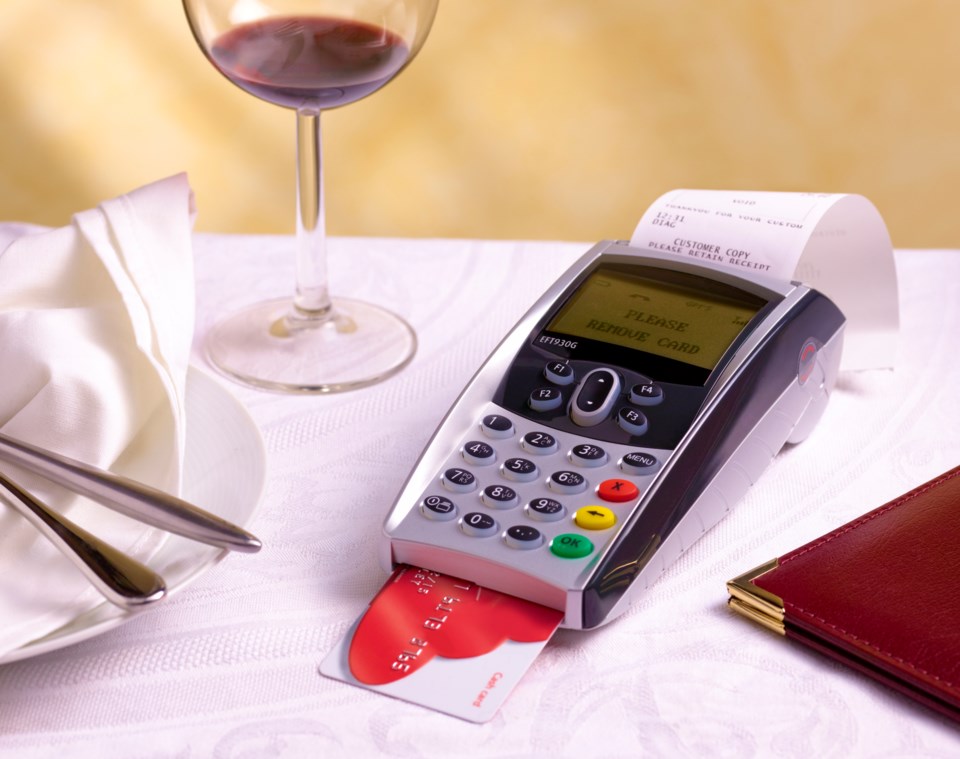Have you noticed how machines at restaurants and other places providing services have been changing over the past few years?
First, the suggested tip percentages added a 20 per cent option, making the traditional 10 per cent tipper look cheap. Then, sometime later, I noticed that some payment terminals started getting rid of the 10 per cent prompts altogether.
Of course, tips remain optional, and there is always a second button that allows adding a custom amount, but I usually try to be fair and polite and thank people in a manner they expect to be thanked. And the pre-set choices do affect our decisions. So the recent changes with payment terminals got me curious about what's happening in the service industry.
Tipping wasn't that widespread in the old country until somewhat recently, and with a way shorter history of this tradition, I had to rely on other people's experiences and suggestions when it comes to tipping. For most of my tipping life, I was told that 10 per cent was a basic tip for normal service, especially in countries with decent minimum wages.
After a while, I had a feeling that a 10 per cent tip was a fine option pretty much everywhere but the U.S., where 20 per cent tips were more widespread even five to 10 years ago (as servers' wages without tips were usually way below living costs). A higher tip would complement the server and the business for something outstanding.
So when I moved to Canada close to 10 years ago, I was told that a 10 per cent tip was a basic option here as well, unless the service was indeed great. (I worked as a server in restaurants on several occasions, and my experience at the other side of the till resonated with this.)
At the beginning of the pandemic, the situation changed, as many people wanted to support people working in service industries. They were, on the one hand, taking higher risks to keep working, and on the other hand, were hit harder due to restrictions. While that longing was natural and personal, the payment terminals started changing altogether.
I noticed in Estevan that some places now dropped the basic 10 per cent option, leaving only the 15-25 per cent prompts. According to CBC, some restaurants in Canada range from 18 to as high as 30 per cent for tip choices now, making Canadians face significant additional costs to services. On top of that, some new businesses started offering to add a tip at the end of the purchase.
Yes, it's just an encouragement to be more generous, but, on the other hand, those changes suggest that the expectations of gratitude have changed as well.
I understand that inflation hits everyone, and prices grow like shrooms after the rain. But I'm talking about tips, which are a percentage of the total bill (usually after tax). So with meals and services costing more, even a 10 per cent tip for supper is way higher than it used to be five years ago. So what's going on with this tip inflation?
I guess part of it naturally grew out of the pandemic years as the service industry noticed the willingness to tip more, and so the businesses started asking more. It is up to the sellers to set and customize tip options on payment terminals. And now the minimal tip choices in many places sit at 15-18 per cent, which means that's the expected minimum a customer would add to their bill for a good service.
It sounds like tip inflation results in fatigue in many people. Not only does it increase already high bills, but it also leaves customers with a sense of frustration as to what they should tip and what if leaving an extra 15 per cent is something they can't really afford. And while the service industry and its employees were seriously affected by lockdowns, nevertheless, tipping more is now hitting the households already struggling to make the ends meet.
At some point, I also came across an opinion that tips are just another side of corruption, where you are paying an extra random price to buy the quality of the service. While I believe the original intention of tips wasn't anything like that, in reality, lower tips may affect the quality of the service, which should be a part of the deal regardless of tips. But for tips to become a notion of the past, the service industry would need to pay employees fair wages to begin with, which might be a tough switch, especially for small businesses.
I don't know if we are there yet or ever will be, but it seems that if current tip tendencies continue it may indeed affect many people's shopping habits and we may either cut down on anything extra, including dining out, entertainment and other services, and/or we may turn back to cash, which allows deciding on tips without pre-set prompts (yet, it doesn't change the expectations).




